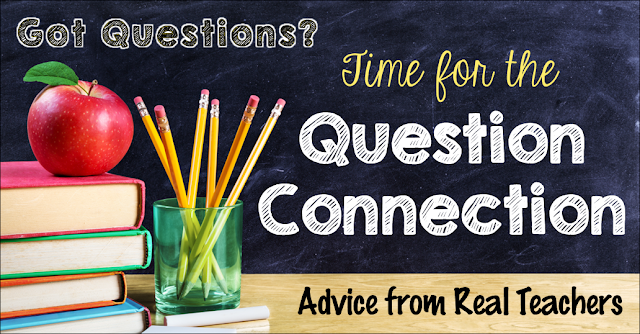
One of the challenges in teaching math effectively, especially as student get older, is finding ways to make it meaningful to their experience. Teachers who have heard students complain, "Why do I need to know this? I will never use it," will know what I mean!
One way to teach the relevance of math in an engaging way is to integrate your math and literature. Within every story there are math problems hiding - my job is to point them out and hopefully encourage students to find their own.
When working with younger students, I simply point out the math I found in the stories we read together, and invite them to help me solve each problem. This can be as simple or complex as you like, so long as it uses elements of the story.
Below are several examples that I've used with my class using both fiction and non-fiction.

The Three Little Pigs
We use fairy tales to introduce the concept of making math stories. For example, after reading the story of the Three Little Pigs, we explore basic operations using characters and events from the story. This is a great vehicle for meaningful math, but also encourages a closer reading of the story for details at the same time. After some examples, I invite students to find their own math connections.
Examples:
- If each little pig had one cookie, how many cookies would they have altogether? 1+1+1=3
- If each little pig had 3 cookies, how many cookies would they have altogether? 3+3+3=9 or 3x3=9.
These equations could also be acted out with 3 students holding 3 paper cookies each. It’s a simple concept, but having students organize and “act out” the math problems is beneficial the goal of developing students’ overall math sense.
Here is an example of the recording sheet we use; student work is in red.
A copy of this recording sheet is available to download at the end of this post if you’d like to try it!
The Selfish Crocodile
Using the book The Selfish Crocodile by Michael Terry, we can explore concepts such as counting, doubling, graphing, sorting, and fractions.
Here are the problems my students generated from the picture below:
*Sort the animals below by characteristic and make a graph: animals with horns, animals with spots, animals that are grey, animals that have wings. For this lesson, watching students decide on the sorting characteristics was a great indicator of their understanding.
From the picture below:
- How many teeth does the crocodile have on the top? How many on the bottom?
- Add them together for the total: 32+32=64
- How many teeth are cracked? 1/64
- What fraction shows how many teeth are on top? 32/64 (or ½) or half are on top.
From the picture below:
- How many animals are above the water?
- How many would there be if there were TWICE as many above the water?
- How many are below the water?
- How many are half above and half below?
- How many MORE are below the water than above? Draw pictures to prove your answer.
Deadly Creatures Dictionary
Using the non-fiction book Deadly Creatures Dictionary by Clint Twist, we found measurement questions to explore. We read that a dolphin is 8 feet long. Since we had just recently read a novel about dolphins, students were really interested to see what 8 feet looked like in real life. So, they worked together to measure with rulers and we cut out a life size dolphin. Then we used the dolphin for non-standard measurement, as seen in the photo at the top of this post.
Actual Size
Using the book, Actual Size by Steve Jenkins, we continued this idea of measurement and real-life sizes. (This book shows pictures that are the actual size of various creatures.) We measured the actual size of a giant squid's eyeball (12 inches), cut strings that length, and then recorded things around the room that were bigger, smaller, or the same size as a giant squid's eyeball!

Ordinary Mary's Extraordinary Deed
Some stories lend themselves naturally to math equations. One example is called Ordinary Mary's Extraordinary Deed by Emily Pearson. This is about a girl who finds some blueberries and decides to leave them on the doorstep for a neighbor as an act of kindness. The neighbor is so pleased that she makes blueberry muffins for 5 people. Those 5 people are so pleased that they EACH do something nice for 5 more people, and the total number of people involved grows exponentially, as
illustrated in the chart below. We had a lot of fun keeping track of the people as the story went on, and older students could expand on this idea in all kinds of ways.
Benefits
These are some of the advantages I’ve seen of integrating math and literature in the classroom:
- It reinforces the idea that math is meaningful and useful in daily life.
- It creates a habit of looking for math outside of math period, which means more practice outside of the classroom.
- It’s a wonderful way to challenge your high-level thinkers to create and solve their own math problems.
- It’s involves questions that are student-generated, which I find leads to more overall engagement.
I hope you'll give it a try the next time you read a story together. You might be surprised at how quickly and efficiently they can make those big connections; I certainly was! If you’d like to use my free recording sheet, just click on the image to download it.
A big thank you to Laura for the opportunity to share these ideas!
Susanna has been teaching primary grades for 20 years and loves sharing ideas with other teachers around the world. Please stop by to visit her at Whimsy Workshop Teaching for more teaching ideas, literacy sets, and teacher graphics!







































